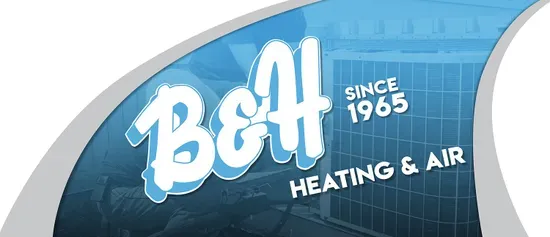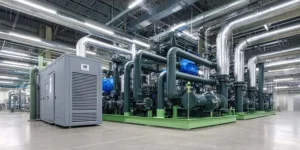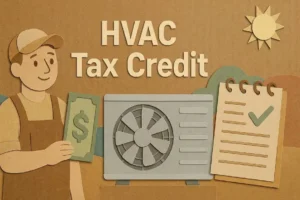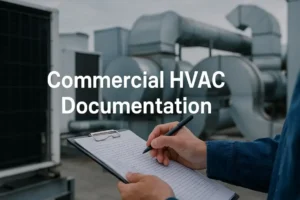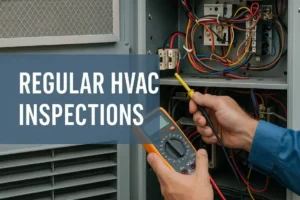Blog Contents
A commercial HVAC system does more than maintain comfort—it directly affects your operating costs, indoor air quality, and overall building performance. But even systems that appear to be running fine can hide costly inefficiencies.
Blocked filters and outdated controls are often small issues that go unnoticed until they’ve quietly inflated your energy bills for months. Spotting and addressing these hidden problems early can help protect your budget and keep your building performing at its best.
5 Common Sources of HVAC Inefficiency in Commercial Spaces
Many inefficiencies creep in gradually, but their impact compounds over time. Here are five of the most common—and easily overlooked—culprits in commercial buildings:
1. Clogged or Dirty Air Filters
Filters that are overdue for replacement can choke airflow and force the system to work harder. This not only spikes your energy use but also shortens the lifespan of your HVAC equipment and worsens indoor air quality.
Pro tip: Set a regular schedule for filter replacements—monthly or quarterly, depending on usage.
2. Faulty or Poorly Set Thermostats
A miscalibrated or malfunctioning thermostat can lead to overcooling or overheating, wasting energy and making occupants uncomfortable. Poor programming—especially during off-hours—also drives up unnecessary usage.
Pro tip: Use smart or programmable thermostats and calibrate them regularly.
3. Refrigerant Leaks and Coil Issues
Low refrigerant levels and dirty coils reduce cooling performance, place stress on the compressor, and increase energy demand.
Pro tip: Schedule seasonal inspections to clean coils and check refrigerant levels.
4. Uneven Temperature Distribution
Hot and cold spots throughout the building often point to blocked vents, poorly designed ductwork, or malfunctioning dampers. These issues strain your system and compromise comfort.
Pro tip: Consider balancing airflow or installing zoning systems for more targeted control.
5. Poor Ventilation and Air Quality
Dirty vents and mold in ducts make it harder to circulate clean air and force the system to work overtime. They also put indoor air quality at risk—something tenants and employees will notice.
Pro tip: Invest in routine duct cleaning and ventilation checks.
Why Older Systems Drain Your Bottom Line
Just because an HVAC system still runs doesn’t mean it’s efficient. Older units may be quietly draining your budget in multiple ways:
- Outdated technology: Older systems often lack modern energy-saving features.
- Frequent repairs: Replacement parts may be harder to source, and breakdowns more common.
- High energy consumption: Even if your usage hasn’t changed, your bills might be climbing.
- Inconsistent comfort: Aging units struggle to maintain even temperatures throughout a building.
Waiting too long to replace an aging system often leads to a string of patchwork repairs and rising costs.
Smart Technology for Smarter HVAC Monitoring
Modern buildings rely on smart systems to catch inefficiencies before they spiral into bigger problems. Here’s how data and automation can help:
Tools That Make a Difference:
- Smart thermostats: Automatically adjust based on usage patterns
- Sensors: Monitor temperature, humidity, and air quality in real time
- Building automation systems (BAS): Integrate control over HVAC, lighting, and more
What You Can Track:
- Daily system run times
- Room-by-room temperature trends
- Energy use by time of day
- Sudden usage spikes that signal problems
By using smart tools, you gain real-time insights and can address issues early—before they affect your bottom line.
Repair or Replace? How to Decide
Many property managers wonder: is it better to repair an existing HVAC system or invest in something new? Here’s how to tell:
Choose Repair If:
- The system is under 10 years old and has been well maintained
- Issues are minor, like filter changes or thermostat fixes
- You’ve kept up with preventive maintenance, reducing long-term wear
- Energy bills have stayed stable, and comfort complaints are rare
A younger, well-maintained system can often be kept running efficiently with smaller fixes.
Consider Replacing If:
- The system is 12–15+ years old and showing signs of decline
- Repair costs are rising, and service calls are becoming more frequent
- Comfort issues persist despite regular maintenance
- Energy use is climbing without a change in usage patterns
- Your building has changed, like renovations or added tenants, and your system is no longer appropriately sized
Bonus Insight: Upgrading to an ENERGY STAR®-rated HVAC system can reduce energy use by 20–30%—and often comes with rebate or incentive opportunities.
Weighing the ROI of a New System
HVAC upgrades are a major investment—but they also deliver long-term returns. Here’s what affects ROI:
- Your building’s age and size
- Current energy costs
- New system efficiency (SEER rating)
- Available rebates and tax credits
- Integration with smart controls
Long-Term Payoffs:
- Lower monthly bills
- Fewer emergency repairs
- Longer equipment life
- Better comfort and air quality
Preventive maintenance is also part of the ROI equation. Even with a new system, regular upkeep protects your investment and avoids costly downtime.
Time to Take a Closer Look
If your HVAC system seems fine but your energy costs are creeping up—or if hot and cold spots are becoming more common—there may be inefficiencies at work behind the scenes.
That’s where B&H Heating & Air comes in. Our professional assessments uncover the issues you can’t always see: airflow blockages, system strain, outdated components, and more.
Because small problems left unchecked become expensive ones over time. Ready to See What Your HVAC System Is Really Costing You?
Let us help you uncover hidden inefficiencies and plan smarter upgrades. Contact B&H today for a comprehensive commercial HVAC assessment.
